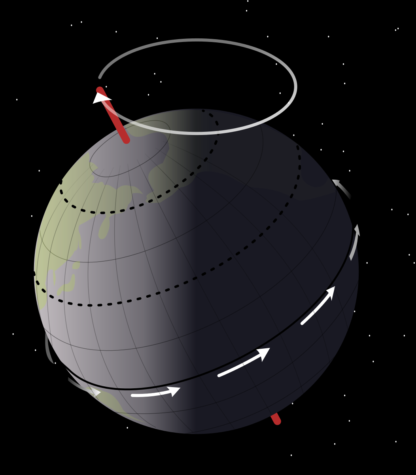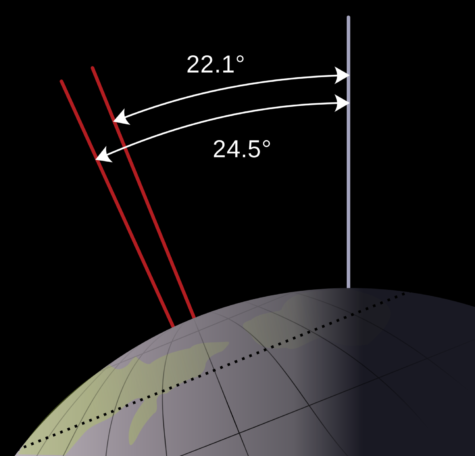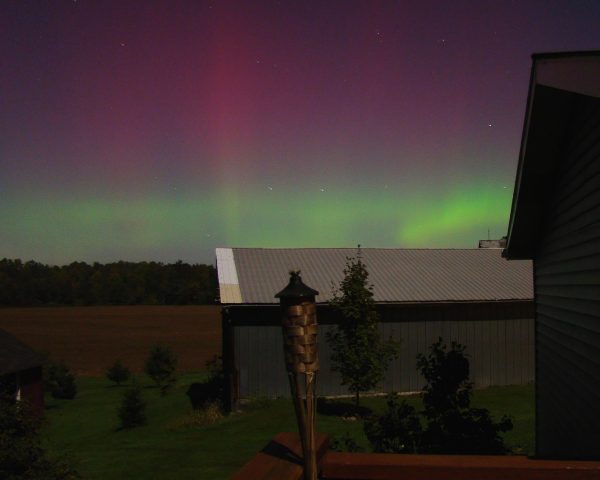The earth’s natural cycle of warming and cooling: Milankovitch Cycle
January 11, 2023
The earth naturally cools and warms over time. This is because of three main factors.
The first factor is the earth’s axis wobbling. This is called precession.
The second factor is the tilt of the earth’s axis changing over time. This is called nutation.
The last factor is the earth’s orbit changing, pushing the earth closer or farther away from the sun. This is called Eccentricity.
These different factors are combined in what is called the Milankovitch Cycle. This cycle shows the natural course of the earth’s temperature. However, these factors, combined, show that earth should be in an ice age right now- which goes to show how big of an impact we humans have made on the climate.
Perhaps you’ve heard the argument that the earth’s warming is simply part of its natural course of warming and cooling. The natural course of temperature changes comes from something called the Milankovitch Cycle.
While most are aware that the earth is warming, most are not sure whether or not the earth’s current is part of its current cycle of warming and cooling or man-made activity.
The earth’s temperature cycle is based on three factors: the tilt of the earth’s axis, the wobbling of the earth’s axis, and the width of earth’s orbit.
These factors together make up the Milankovitch cycle.
To begin, the first factor of the Milankovitch cycle is the tilt of earth, or precession. As time passes, the earth’s axis actually rotates. It takes around 19 to 24 thousand years to rotate once in a full circle.
At certain angles, more of the ice at the arctic melts, which leads to a runaway effect. At other angles, the ice in the arctic barely melts.

The next factor of this cycle is the amount the earth is tilted, or nutation. This angle varies as well, but with a way longer period of around 41 thousand years.
At more severe angles, more of the ice will be melted. At smaller angles; less of the ice melts.

The third factor is the shape of earth’s orbit, or eccentricity. It varies from being more of an oval to a circle. It is a common misconception that the seasons are caused by the earth getting closer to the sun in the summer, and farther away from the sun in the winter. While the distance of earth from the sun does vary, it does not vary nearly as much or as frequently to cause seasons. Instead, the earth’s orbit goes from a slight oval to a circle.
This factor takes the longest to vary, taking around 413,000 years for the orbit to return to a circle. There is almost a difference of 23% between the average heat on earth at the farthest and closest placement to the orbit.

According to NASA, if account for all these factors, earth should be in a cooling period, not warming.




